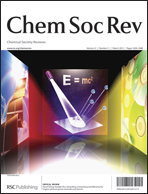Metal–organic frameworks (MOFs) have emerged as a new type of porous materials for diverse applications. Most open MOFs reported to date are microporous (pore sizes <2 nm), and only a small fraction of MOFs with ordered mesoscale domains (2–50 nm) is reported. This tutorial review covers recent advances in the field of mesoporous MOFs (mesoMOFs), including their design and synthesis, porosity activation and surface modification, and potential applications in storage and separation, catalysis, drug delivery and imaging. Their specificities are dependent on the pore shape, size, and chemical environments of the cages or channels. The relationship between the structures and functions is discussed. The future outlook for the field is discussed in the context of current challenges in applications of mesoporous materials.
You have access to this article
 Please wait while we load your content...
Something went wrong. Try again?
Please wait while we load your content...
Something went wrong. Try again?


 Please wait while we load your content...
Please wait while we load your content...